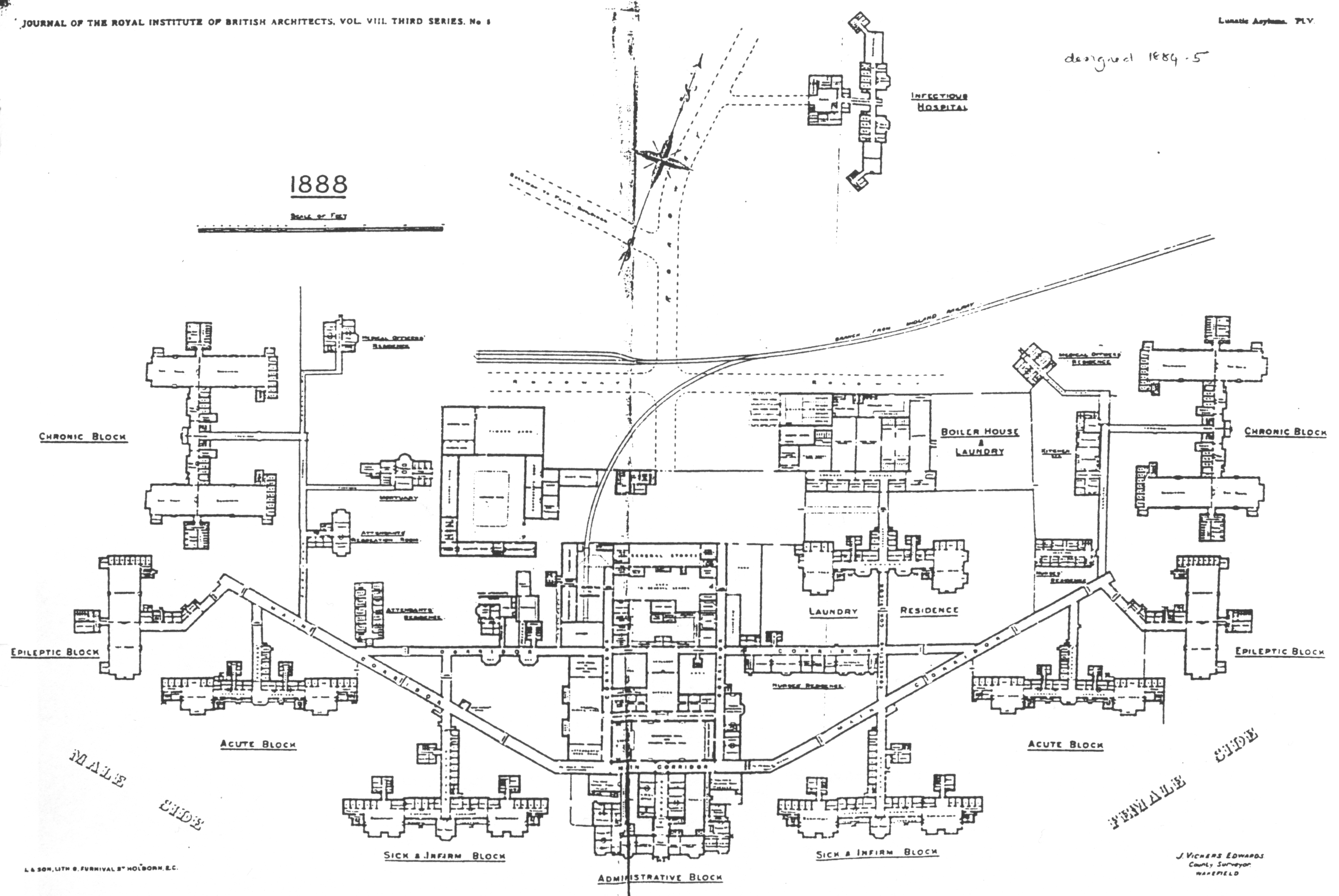

In addition the Southern Counties Asylum, which was intended to provide facilities for paupers, was erected on the site of the Crichton Royal Institution (which focused on fee paying patients) in 1849 but subsequently amalgamated with the Crichton Royal Institution. The following asylums were commissioned under the auspices of the Commissioners in Lunacy for Scotland: The aim of the legislation was to establish a network of "district asylums" with coverage throughout Scotland. These existing "Royal Asylums" (with Royal Charters) were the Aberdeen Royal Lunatic Asylum, the Crichton Royal Institution, the Dundee Royal Lunatic Asylum, the Royal Edinburgh Lunatic Asylum, the Glasgow Royal Lunatic Asylum, the Montrose Royal Lunatic Asylum and James Murray's Royal Lunatic Asylum. It also created district boards with the power to establish and operate publicly funded "district asylums" for patients who could not afford the fees charged by existing private and charitable "Royal Asylums". The legislation created a General Board of Commissioners in Lunacy for Scotland. Mainly based at 51 Queen Street in Edinburgh.

The Commissioners themselves were physicians. 1897-1909 Walter George Hepburne-Scott, 9th Lord Polwarth.
 1894-1897 Sir Thomas Gibson-Carmichael. 1857-1859 William Elliot-Murray-Kynynmound, 3rd Earl of Minto. There were two Commissioners of Lunacy each paid £1,200 a year and two Deputy Commissioners each paid £600 a year. The Board of Commissioners in Lunacy for Scotland was established in 1857 by the Lunacy (Scotland) Act 1857. The Madhouses (Scotland) Act 1815 established the right of Scottish Sheriffs to order the inspection of madhouses. “When I finally met Bruce McCall, I felt the thrill that other people feel when meeting Springsteen.The Commissioners in Lunacy for Scotland or Lunacy Commission for Scotland were a public body established by the Lunacy (Scotland) Act 1857 to oversee asylums and the welfare of mentally ill people in Scotland. He was a huge talent and such an important and protean presence in our pages.”-David Remnick Bruce was also a brilliant writer, both a sharp and hilarious satirist and a wintry memoirist. “Bruce is best-known for his visual world, the surrealist World’s Fair futurism, his affection for a past that never was, the sheer lunacy, but that is only part of his brilliance. I asked more of McCall’s friends and colleagues what they’ll remember and treasure about him and his work: For a curmudgeon, he was always happy to see you.” He often felt (needlessly) that he got short shrift as a writer, but I was always excited when my inbox contained a message from him, which would generally begin: ‘Please read this submission and laugh your goddamn head off.’ He was a first-class pal. “He alchemized his misanthropy into joyously anarchic paintings and drawings and pieces of writing. “Bruce was a genius,” the New Yorker editor Susan Morrison said. McCall contributed more than eighty covers (this is his eighty-third) and about as many Shouts & Murmurs columns.
1894-1897 Sir Thomas Gibson-Carmichael. 1857-1859 William Elliot-Murray-Kynynmound, 3rd Earl of Minto. There were two Commissioners of Lunacy each paid £1,200 a year and two Deputy Commissioners each paid £600 a year. The Board of Commissioners in Lunacy for Scotland was established in 1857 by the Lunacy (Scotland) Act 1857. The Madhouses (Scotland) Act 1815 established the right of Scottish Sheriffs to order the inspection of madhouses. “When I finally met Bruce McCall, I felt the thrill that other people feel when meeting Springsteen.The Commissioners in Lunacy for Scotland or Lunacy Commission for Scotland were a public body established by the Lunacy (Scotland) Act 1857 to oversee asylums and the welfare of mentally ill people in Scotland. He was a huge talent and such an important and protean presence in our pages.”-David Remnick Bruce was also a brilliant writer, both a sharp and hilarious satirist and a wintry memoirist. “Bruce is best-known for his visual world, the surrealist World’s Fair futurism, his affection for a past that never was, the sheer lunacy, but that is only part of his brilliance. I asked more of McCall’s friends and colleagues what they’ll remember and treasure about him and his work: For a curmudgeon, he was always happy to see you.” He often felt (needlessly) that he got short shrift as a writer, but I was always excited when my inbox contained a message from him, which would generally begin: ‘Please read this submission and laugh your goddamn head off.’ He was a first-class pal. “He alchemized his misanthropy into joyously anarchic paintings and drawings and pieces of writing. “Bruce was a genius,” the New Yorker editor Susan Morrison said. McCall contributed more than eighty covers (this is his eighty-third) and about as many Shouts & Murmurs columns.







 0 kommentar(er)
0 kommentar(er)
